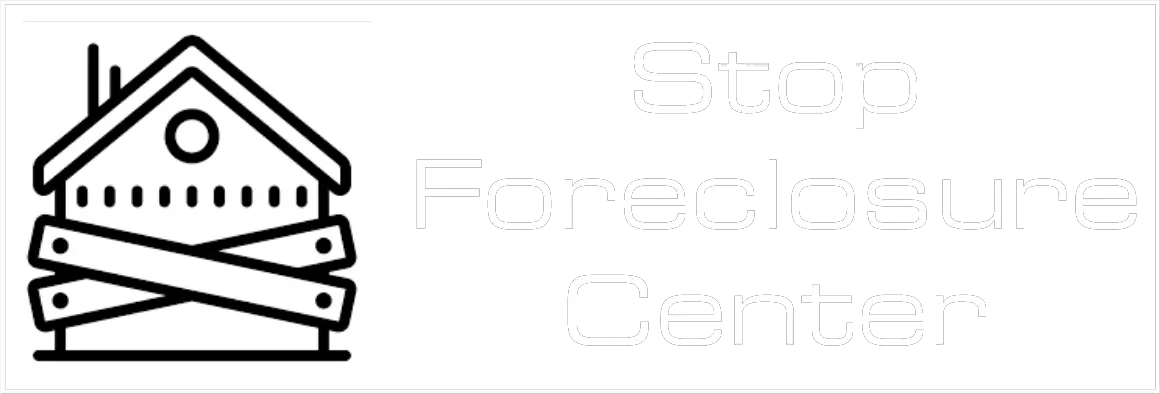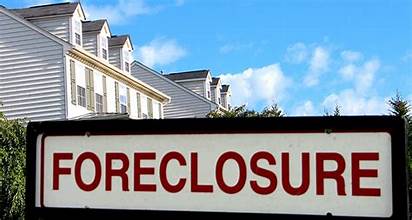Foreclosure can be a daunting and distressing experience for anyone. It’s a process that no homeowner wants to face, but understanding it is crucial. In this comprehensive beginner’s guide to foreclosure, we will demystify the complex world of foreclosure, providing you with the knowledge and tools needed to navigate this challenging situation.
In this well-articulated guide, we will break down the foreclosure process step by step, exploring its causes, warning signs, and the legal intricacies involved. We’ll also delve into alternatives to foreclosure and offer guidance on how to rebuild your financial stability after the storm has passed. It doesn’t matter if you’re facing foreclosure or simply want to be prepared; this guide is your roadmap to foreclosure awareness and recovery.
Understanding Foreclosure
Foreclosure is a complex and often distressing process, but before we delve into its intricacies, let’s establish a solid foundation by understanding what foreclosure is, how it works, and why it happens.
Legal Definition of Foreclosure
Foreclosure, from a legal perspective, is the legal process through which a lender attempts to recover the balance of a loan by forcing the sale of the property used as collateral. When a borrower defaults on their mortgage payments, the lender has the right, as stipulated in the mortgage agreement, to take possession of the property through a series of legal steps. These steps vary depending on state laws and can involve court proceedings or a non-judicial process.
Common Terms and Concepts
To navigate the foreclosure process effectively, it’s essential to understand some common terms and concepts:
- Mortgage: A loan agreement in which a borrower pledges their property as collateral.
- Default: Occurs when a borrower fails to make scheduled mortgage payments.
- Lien: A legal claim against a property to secure the repayment of a debt.
- Notice of Default: A formal notice sent by the lender to inform the borrower of their delinquent payments and impending foreclosure.
- Auction: The public sale of a foreclosed property to recover the lender’s losses.
- Redemption Period: A period during which the borrower can pay off the debt and reclaim the property.
- Deficiency Judgment: A court-ordered judgment that allows the lender to collect the remaining debt if the sale doesn’t cover the full amount.
- Foreclosure Sale: The sale of the property by the lender or trustee to recover the outstanding debt.
- Sheriff’s Sale: A public auction of a foreclosed property conducted by the county sheriff.
- Trustee Sale: An auction of a foreclosed property typically conducted by a trustee appointed by the lender.
- Foreclosure Timeline: The sequence of events from the first missed payment to the final sale of the property.
- Mortgage Agreement: The legal contract outlining the terms and conditions of the loan, including the repayment schedule.
- Principal Balance: The original amount of the loan before interest and other charges.
- Interest Rate: The percentage of the loan amount charged by the lender for borrowing the money.
- Equity: The difference between the property’s market value and the outstanding mortgage balance.
- Lis Pendens: A legal notice filed with the county recorder’s office indicating that a foreclosure lawsuit is pending.
- Bankruptcy: A legal process that can temporarily halt foreclosure proceedings and provide a debtor with debt relief options.
- Loss Mitigation: The process by which lenders work with borrowers to avoid foreclosure, often through loan modification or refinancing.
- HUD (U.S. Department of Housing and Urban Development): A government agency that provides resources and information about foreclosure prevention.
- Credit Score: A numerical representation of a borrower’s creditworthiness, which can be affected by foreclosure.
How Foreclosure Works
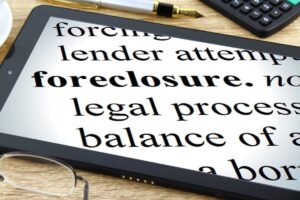
Foreclosure Process Overview
Foreclosure typically involves several stages, including:
- Pre-Foreclosure: This stage begins when the borrower misses payments and can last for several months. During this time, the lender sends notices and attempts to work out a resolution.
- Auction: If the borrower can’t resolve the delinquency, the property may be auctioned off to the highest bidder.
- Post-Foreclosure: After the auction, the property may be sold, and the borrower is usually evicted if they haven’t vacated the premises.
Parties Involved
In a foreclosure process, several parties are involved, each with specific roles and responsibilities. Here’s an outline of the main parties involved in foreclosure:
- Borrower/Homeowner:
- The individual or individuals who initially purchased the property and obtained the mortgage loan.
- Responsible for making regular mortgage payments.
- Lender:
- The financial institution or entity that provided the mortgage loan to the borrower.
- Holds a legal interest in the property as collateral for the loan.
- Servicer:
- Sometimes, the lender may hire a loan servicing company to manage the day-to-day administration of the loan.
- Responsible for collecting payments, sending notices, and handling escrow accounts.
- Trustee (in some states):
- In non-judicial foreclosure states, a trustee may be appointed to oversee the foreclosure process.
- Ensures that the foreclosure sale is conducted following state regulations.
- Foreclosure Attorney (in some cases):
- Represents the lender’s interests in the foreclosure process.
- May initiate legal action against the borrower if necessary.
- County Sheriff (in judicial foreclosures):
- In judicial foreclosure states, the county sheriff may be responsible for carrying out the foreclosure sale.
- Conducts the auction and ensures it follows legal procedures.
- Buyer/Investor:
- The individual or entity that purchases the foreclosed property at auction or through other means.
- Acquires the property as an investment or for personal use.
- Court (in judicial foreclosures):
- In judicial foreclosure states, the court system plays a significant role.
- Reviews the foreclosure case, issues orders, and oversees the legal proceedings.
- Housing Counselors and Non-Profit Organizations:
- Provide assistance and resources to homeowners facing foreclosure.
- Offer counseling and guidance on foreclosure prevention options.
- Government Agencies:
- Agencies like the U.S. Department of Housing and Urban Development (HUD) may offer foreclosure prevention programs and resources.
- Local housing authorities may also be involved in providing assistance.
- Insurance Companies:
- In cases where the homeowner had mortgage insurance, the insurer may be involved in claims related to the foreclosure.
- Title Companies:
- Ensure that the property’s title is clear for transfer to the new owner after the foreclosure sale.
Types of Mortgages and Foreclosure

Different types of mortgages can impact the foreclosure process. Understanding whether you have a fixed-rate mortgage, an adjustable-rate mortgage (ARM), or other variations can influence how foreclosure proceedings unfold.
Here’s an outline of the types of mortgages and how they can impact the foreclosure process:
Types of Mortgages and Foreclosure
- Fixed-Rate Mortgage
- Definition: A mortgage with a stable interest rate throughout the loan term.
- Impact on Foreclosure: Borrowers with fixed-rate mortgages have predictable monthly payments, which can make it easier to avoid foreclosure if they manage their finances effectively.
- Adjustable-Rate Mortgage (ARM)
- Definition: A mortgage with an interest rate that can change periodically, typically after an initial fixed-rate period.
- Impact on Foreclosure: ARM borrowers may face payment increases, potentially leading to financial strain and a higher risk of foreclosure when interest rates rise.
- Interest-Only Mortgage
- Definition: A mortgage where the borrower pays only the interest for a specified period before making principal payments.
- Impact on Foreclosure: Borrowers who don’t transition to making principal payments may face a larger outstanding balance, increasing the risk of foreclosure.
- Subprime Mortgage
- Definition: A mortgage offered to borrowers with low credit scores or a higher risk of default.
- Impact on Foreclosure: Subprime borrowers are at a higher risk of foreclosure due to their credit profiles, often facing less favorable loan terms.
- FHA Loan (Federal Housing Administration)
- Definition: A government-insured mortgage program designed to help borrowers with lower down payments and credit scores.
- Impact on Foreclosure: FHA loans can be more accessible, but borrowers must meet specific requirements to prevent foreclosure.
- VA Loan (U.S. Department of Veterans Affairs)
- Definition: A mortgage program for eligible veterans, service members, and their families.
- Impact on Foreclosure: VA loans offer favorable terms, but borrowers should ensure they meet program requirements to avoid foreclosure.
- Reverse Mortgage
- Definition: A mortgage option available to seniors that allows them to convert home equity into cash.
- Impact on Foreclosure: Borrowers must meet specific obligations to prevent foreclosure on a reverse mortgage, such as paying property taxes and maintaining the property.
- Balloon Mortgage
- Definition: A mortgage with low initial payments followed by a large lump-sum payment (the balloon payment) at the end of the loan term.
- Impact on Foreclosure: Borrowers with balloon mortgages face the risk of being unable to make the final balloon payment, potentially leading to foreclosure.
- Interest-Adjustable Mortgage
- Definition: A mortgage where unpaid interest is added to the loan principal, increasing the overall debt.
- Impact on Foreclosure: Over time, interest-adjustable mortgages can result in growing loan balances, making it challenging for borrowers to prevent foreclosure.
Causes of Foreclosure
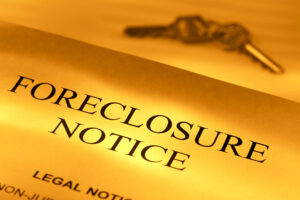
Financial Hardships
Financial hardships are a leading cause of foreclosure. These hardships can result from unexpected life events such as medical emergencies, natural disasters, or simply an accumulation of debt. When homeowners face financial challenges, they may struggle to make their mortgage payments, increasing the risk of foreclosure.
Job Loss
The loss of a job or a significant reduction in income can quickly lead to missed mortgage payments. Without a stable source of income, homeowners may find it challenging to cover their monthly housing expenses, increasing the likelihood of foreclosure.
Medical Emergencies
Costly medical emergencies, especially when they are not adequately covered by insurance, can strain a family’s finances. Medical bills and related expenses can become overwhelming, causing homeowners to fall behind on their mortgage payments and potentially face foreclosure.
Divorce and Separation
Divorce or separation often involves the division of assets and changes in living arrangements. These transitions can lead to financial instability, making it difficult for one or both parties to maintain mortgage payments. As a result, homes may be at risk of foreclosure.
Excessive Debt
High levels of unmanageable debt, such as credit card debt or personal loans, can strain a household’s budget. When debt consumes a significant portion of a family’s income, there may not be enough left to cover mortgage payments, increasing the risk of foreclosure.
Adjustable-Rate Mortgages (ARMs)
Borrowers with adjustable-rate mortgages (ARMs) may experience payment increases when interest rates rise. If homeowners cannot afford these higher payments, they may face financial stress and, ultimately, foreclosure.
Subprime Mortgages
Subprime mortgages, offered to borrowers with lower credit scores or financial challenges, often come with higher interest rates and less favorable terms. These borrowers are at greater risk of defaulting on their loans, increasing the likelihood of foreclosure.
Failure to Refinance
Failing to refinance a mortgage to more favorable terms when interest rates are low or when the homeowner’s credit improves can result in higher monthly payments. If homeowners cannot secure a more affordable mortgage, they may struggle to make payments and face foreclosure.
Legal Issues
Legal issues, such as disputes over property rights, can lead to foreclosure. In some cases, homeowners may become embroiled in complex legal battles that affect their ability to maintain their mortgage payments.
Property Taxes and Homeowners Association (HOA) Fees
Failure to pay property taxes or HOA fees can lead to foreclosure. When these obligations go unpaid, the local government or HOA may place liens on the property, eventually leading to a foreclosure sale.
Preparing for Foreclosure
Facing foreclosure is a challenging situation, but being proactive can make a significant difference in how you navigate it. In this chapter, we will discuss how to prepare for foreclosure by recognizing warning signs and seeking assistance.
Recognizing Foreclosure Warning Signs
Foreclosure doesn’t happen overnight; there are warning signs that homeowners should be aware of:
Missed Payments
The most common and noticeable warning sign is missing one or more mortgage payments. Falling behind on payments can trigger the foreclosure process.
Letters and Notices from Lender
Receiving letters and notices from your lender about missed payments or defaults is a clear indication of potential foreclosure. Ignoring these communications can exacerbate the situation.
Increased Interest Rates (For Adjustable-Rate Mortgages)
If you have an adjustable-rate mortgage (ARM), an increase in interest rates can lead to higher monthly payments, making it challenging to keep up with payments and increasing the risk of foreclosure.
Escalating Late Fees and Penalties
Accumulating late fees and penalties on missed payments can substantially increase the amount you owe, making it more difficult to catch up on your mortgage.
Decreased Home Equity
Falling home values or excessive borrowing against your home’s equity can result in negative equity. This situation can make it harder to sell your home or refinance, increasing the risk of foreclosure.
Lis Pendens Notice
A lis pendens notice filed with the county recorder’s office indicates a pending foreclosure lawsuit. It’s a legal warning sign that your lender has initiated foreclosure proceedings.
Persistent Financial Hardships
Facing ongoing financial difficulties, such as job loss, medical bills, or excessive debt, without finding a solution can lead to foreclosure.
Legal Notices and Summons
Receiving legal notices, such as a Notice of Default or a summons to appear in court, indicates that the foreclosure process has advanced to a more critical stage.
Property Tax Delinquency
Falling behind on property tax payments can result in tax liens on your property, which can eventually lead to foreclosure.
Utility Disconnections
Disconnect notices for essential utilities like water and electricity can be a sign of financial distress, which may contribute to foreclosure.
Inability to Afford Other Housing Expenses
Struggling to cover expenses beyond the mortgage, such as homeowners association (HOA) fees, maintenance, and insurance, can indicate financial instability.
Legal Actions by Creditors
Facing lawsuits or judgments from creditors unrelated to your mortgage can be a sign of overall financial distress, which may impact your ability to prevent foreclosure.
Seeking Assistance
When you’re facing foreclosure, seeking assistance is a crucial step to explore your options and potentially avoid losing your home.
Contacting Your Lender
If you find yourself struggling with mortgage payments or anticipate financial difficulties in the future, it’s advisable to contact your lender as soon as possible. Lenders may be willing to work with you to find a solution, such as loan modification, repayment plans, or forbearance. Open communication with your lender is key to resolving financial issues.
Foreclosure Prevention Programs
Many government and non-profit organizations offer foreclosure prevention programs to assist homeowners facing financial hardship. These programs may provide counseling, mediation services, and resources to help you understand your options and navigate the foreclosure process.
Working with Housing Counselors
Housing counselors are trained professionals who can provide guidance on foreclosure prevention and financial stability. They can help you understand your financial situation, negotiate with your lender, and explore alternatives to foreclosure. Housing counselors are valuable allies in your efforts to keep your home.
The Foreclosure Process

Foreclosure Timeline
Learning all about the timeline of the foreclosure process is essential for homeowners facing this challenging situation. It typically involves several key stages:
Pre-Foreclosure
Pre-foreclosure is the period during which a homeowner has missed payments but has not yet lost the property. During this stage, the lender typically sends notices, and homeowners have opportunities to rectify their financial situation.
Auction
The auction stage involves the public sale of the foreclosed property. It is the culmination of the foreclosure process, where the property is sold to the highest bidder to recover the lender’s losses.
Post-Foreclosure
After the auction, the property may be sold, and the borrower may face eviction if they haven’t vacated the premises. This stage marks the completion of the foreclosure process.
Legal Procedures and Documentation
Foreclosure involves a range of legal procedures and documentation that must be followed to ensure a lawful and transparent process.
Notice of Default
A Notice of Default is a formal notice sent by the lender to inform the borrower of their delinquent payments and impending foreclosure. It serves as the initial legal step in the foreclosure process, providing the borrower with an opportunity to take corrective action.
Lis Pendens
A Lis Pendens is a legal notice filed with the county recorder’s office indicating that a foreclosure lawsuit is pending. This notice puts potential buyers and interested parties on notice that there is a legal dispute involving the property.
Auction Details
The auction process involves specific details, including the date, time, and location of the sale. These details are crucial for potential buyers, as they need to participate in the auction if they are interested in acquiring the foreclosed property.
Foreclosure Auctions

Types of Foreclosure Auctions
Foreclosure auctions can take various forms, each with its own characteristics:
Sheriff’s Sale
Sheriff’s sales are public auctions conducted by the county sheriff or a designated law enforcement officer. These auctions are common in judicial foreclosure states and serve to sell foreclosed properties to the highest bidder to recover the lender’s debt.
Trustee Sale
Trustee sales, prevalent in non-judicial foreclosure states, are auctions overseen by a trustee, typically designated in the mortgage contract. These sales follow specific legal procedures outlined in state law and are used to sell the property to satisfy the debt.
Bidding and Winning
Participating in a foreclosure auction involves strategic considerations, including how to bid effectively and secure the property:
How to Participate
Participating in a foreclosure auction is crucial and includes meeting any prerequisites, registering, and being prepared with the necessary funds to place bids.
Bidding Strategies
Bidding in a foreclosure auction requires strategy. We will explore different bidding strategies, including setting a budget, conducting property research, and deciding when and how much to bid.
Here is a brief list of steps for how to participate in bidding and winning at a foreclosure auction:
- Research: Conduct thorough research on the property you intend to bid on, including its condition, market value, and potential liens or encumbrances.
- Check Auction Details: Verify the date, time, and location of the foreclosure auction. Ensure you meet any prerequisites for participation.
- Registration: Register with the auction organizer or trustee as required. This often involves providing identification and proof of funds.
- Secure Financing: Have your financing in place before the auction, whether it’s cash, a cashier’s check, or a pre-approved loan.
- Set a Budget: Determine your maximum bid amount and stick to it. Avoid getting caught up in bidding wars that could exceed your budget.
- Attend the Auction: Be present at the auction site or participate online, depending on the auction format.
- Observe the Process: Familiarize yourself with the auction proceedings and rules. Pay attention to bidding increments and any specific requirements.
- Place Your Bid: When the property is up for auction, place your bid confidently within your budget.
- Winning the Bid: If you have the highest bid, you will be declared the winner. Be prepared to provide the required deposit immediately or within a specified timeframe.
- Follow Legal Requirements: Comply with any legal requirements, such as redemption periods, eviction processes, or additional documentation, to secure possession of the property.
- Consult Professionals: Consider consulting with real estate professionals, attorneys, or financial advisors for guidance throughout the process.
What Happens After Winning?
Winning a bid at a foreclosure auction marks the beginning of a new phase, which comes with its own set of considerations:
Redemption Period
Some states grant a redemption period to the former homeowner, allowing them to reclaim the property by paying the winning bid amount and additional costs. Understanding this period is essential for buyers.
Eviction and Possession
In cases where the former homeowner does not redeem the property, buyers may need to navigate eviction procedures to take possession of the property. This step involves adhering to legal requirements and timelines.
Alternatives to Foreclosure
Loan Modification
Loan modification is a proactive approach for homeowners facing financial difficulties and struggling to make their mortgage payments. It involves negotiating changes to the terms of the existing mortgage with the lender. These modifications can include:
- Interest Rate Reduction: Lowering the interest rate on the mortgage to reduce monthly payments
- Loan Term Extension: Extending the loan term can also lower monthly payments by spreading them over a longer period.
- Principal Forbearance: Temporarily reducing or deferring a portion of the principal balance to make payments more affordable.
- Capitalization of Arrears: Adding missed payments and fees to the existing loan balance, effectively spreading them out over the life of the loan
- Change in Loan Type: Converting from an adjustable-rate mortgage (ARM) to a fixed-rate mortgage for payment stability.
Loan modifications aim to help homeowners stay in their homes by making mortgage payments manageable. However, eligibility criteria and the success of negotiations can vary, and it’s crucial to work closely with the lender during this process.
Short Sale
A short sale is an option when a homeowner owes more on their mortgage than the current market value of the property. In a short sale:
- The homeowner lists the property for sale at or below its current market value.
- Offers from potential buyers are submitted to the lender for approval.
- If the lender agrees to the sale, the property is sold, and the proceeds are used to satisfy as much of the outstanding mortgage debt as possible.
Short sales can be a solution for homeowners who cannot afford their mortgage payments and want to avoid foreclosure. While it allows homeowners to sell the property, it may impact their credit score, and they may still owe a deficiency balance if the sale doesn’t cover the full mortgage debt.
Deed in Lieu of Foreclosure
A deed in lieu of foreclosure is a voluntary agreement between the homeowner and the lender. In this option:
- The homeowner willingly transfers ownership of the property to the lender, avoiding the formal foreclosure process.
- The lender may forgive some or all of the outstanding mortgage debt, depending on the negotiation.
A deed in lieu of foreclosure can be an option for homeowners who can no longer afford their homes and are willing to surrender the property to the lender. It is typically considered when other alternatives have been explored without success. However, it may still have credit implications for homeowners.
Bankruptcy and Foreclosure
Bankruptcy is a legal process that can provide temporary relief from foreclosure proceedings. When a homeowner files for bankruptcy:
- An automatic stay is initiated, temporarily halting foreclosure actions.
- Depending on the type of bankruptcy, debts may be discharged or restructured, potentially making mortgage payments more manageable.
- Homeowners can have time to negotiate with creditors and explore alternatives to foreclosure.
Bankruptcy should be considered carefully, as it has significant long-term financial consequences. It may provide a breathing space for homeowners facing foreclosure but should be undertaken with legal counsel and an understanding of its impact on credit and assets.
Rebuilding After Foreclosure
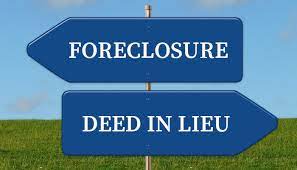
Credit Repair and Rebuilding
Credit Scores
Credit scores are numerical representations of your creditworthiness. After a foreclosure, your credit score may have been negatively affected. Rebuilding your credit score involves:
- Understanding Credit Scores: Familiarize yourself with how credit scores work and the factors that influence them, including payment history, credit utilization, length of credit history, types of credit, and new credit.
- Reviewing Your Credit Report: Obtain your credit reports from major credit bureaus (Equifax, Experian, and TransUnion) and carefully review them for inaccuracies or discrepancies. Report any errors to the credit bureau to have them corrected.
- Payment History: Make timely payments on all your bills and debts moving forward. Consistently paying bills on time is one of the most significant factors in improving your credit score.
- Reducing Debt: Work on paying down existing debts, including credit card balances and loans. Reducing your debt-to-credit ratio can positively impact your credit score.
- Establishing Positive Credit: If you don’t have open credit accounts, consider getting a secured credit card or becoming an authorized user on someone else’s credit card. Responsible use of credit can help rebuild your credit history.
Credit Reports
Credit reports provide detailed information about your credit history, including your credit accounts, payment history, and public records. Rebuilding your credit report involves:
- Regular Monitoring: Continue to monitor your credit reports regularly to ensure accuracy and track your progress in rebuilding your credit.
- Disputing Errors: If you discover inaccuracies or outdated information on your credit reports, take steps to dispute and correct them with the credit reporting agencies.
- Establishing Good Credit Habits: Develop responsible credit habits, such as paying bills on time, maintaining low credit card balances, and avoiding excessive new credit inquiries.
Finding New Housing
Finding new housing after foreclosure is a significant step in rebuilding your life:
- Assessing Your Housing Needs: Determine your current housing needs, such as the size and location of your new home, and consider your financial capabilities.
- Rental Considerations: If you plan to rent, research the rental market in your desired area. Understand tenant rights, gather necessary documentation, and prepare rental applications.
- Homeownership Again: If you aspire to own a home again, be prepared to rebuild your credit, save for a down payment, and explore mortgage options suited to your financial situation.
Financial Planning
Financial planning is vital for your long-term financial stability.
- Budgeting and Saving: Create a budget to manage your finances effectively. Allocate funds for essentials, savings, and debt repayment. Building an emergency fund is essential to handling unexpected expenses.
- Debt Management: Develop a plan to manage and reduce existing debts. Prioritize paying off high-interest debts and consider debt consolidation or negotiation with creditors.
- Investment and Retirement Planning: Set long-term financial goals and consider investments that align with your risk tolerance and objectives. Plan for retirement by contributing to retirement accounts, such as 401(k)s or IRAs.
- Seeking Professional Advice: If needed, consult with financial advisors or credit counselors who can provide expert guidance on rebuilding your financial health.
Rebuilding after foreclosure takes time and effort, but with a well-thought-out plan and dedication, you can gradually regain financial stability and move forward toward your financial goals.
Resources and Support
Government Agencies and Programs
Government agencies and programs play a crucial role in assisting individuals dealing with foreclosure.
- HUD (U.S. Department of Housing and Urban Development): HUD offers valuable resources and counseling services to homeowners facing foreclosure. Their website provides information on foreclosure prevention, housing counseling agencies, and the Making Home Affordable Program, which includes options like loan modification and refinancing.
- FHA (Federal Housing Administration): The FHA provides mortgage insurance and assistance to homeowners experiencing financial hardship. They offer various programs, such as the FHA-HAMP program, which allows eligible homeowners to modify their mortgages to make payments more affordable.
- Fannie Mae and Freddie Mac: These government-sponsored enterprises offer support to homeowners through programs like the Home Affordable Modification Program (HAMP). Homeowners may qualify for loan modifications or refinancing options to prevent foreclosure.
- State Housing Authorities: Many states have their housing authorities that administer foreclosure prevention programs tailored to local needs. These programs may offer financial assistance, housing counseling, and foreclosure mediation services.
Non-Profit Organizations
Non-profit organizations are valuable resources for individuals facing foreclosure.
- NeighborWorks America: This nationwide network of non-profit organizations provides foreclosure counseling, financial education, and homebuyer assistance programs. They connect homeowners with local HUD-approved housing counseling agencies.
- Consumer Credit Counseling Services (CCCS): CCCS agencies offer free or low-cost credit counseling services, including debt management plans. They can help homeowners create budgets, negotiate with creditors, and explore foreclosure prevention options.
- Habitat for Humanity: Some local chapters of Habitat for Humanity offer housing counseling and assistance to individuals at risk of foreclosure. They may provide resources and support to help homeowners keep their homes.
Legal Assistance
Legal assistance is crucial for homeowners facing foreclosure:
- Legal Aid Organizations: Many regions have legal aid organizations that offer free or low-cost legal services to low-income individuals facing foreclosure. These organizations can provide legal representation and advice throughout the foreclosure process.
- Pro Bono Legal Services: Some law firms and attorneys offer pro bono (free) legal assistance to homeowners in need. Pro bono attorneys can help homeowners understand their rights and navigate the legal complexities of foreclosure.
- Foreclosure Defense Attorneys: Specialized foreclosure defense attorneys focus on protecting homeowners’ interests during foreclosure proceedings. They can negotiate with lenders, represent homeowners in court, and explore legal defenses to prevent foreclosure.
Online Tools and Calculators
Online tools and calculators can assist individuals in various aspects of managing their finances and preventing foreclosure.
- Mortgage Calculators: These tools help homeowners estimate their mortgage payments, compare refinance options, and understand the financial impact of different scenarios. They provide insights into how changes in interest rates or loan terms affect monthly payments.
- Budgeting and Debt Reduction Tools: Online resources allow homeowners to create detailed budgets, track expenses, and develop strategies for reducing debt. They may include debt repayment calculators that help users formulate debt reduction plans.
- Foreclosure Prevention Resources: Websites and apps dedicated to foreclosure prevention offer guidance, information, and checklists to help homeowners navigate the process. They may provide step-by-step instructions for contacting lenders, accessing government programs, and seeking assistance from non-profit organizations.
These comprehensive resources and support services are essential for individuals facing foreclosure, providing them with the tools, knowledge, and assistance needed to make informed decisions, protect their rights, and work toward financial recovery.
Conclusion
Navigating foreclosure is a challenging journey, but it’s not insurmountable. This comprehensive guide has provided insights into understanding, preventing, and recovering from foreclosure. Homeowners can take proactive steps to regain financial stability and work towards a brighter future. Always keep in mind that, with the right knowledge and support, there is hope, even in the face of foreclosure.
